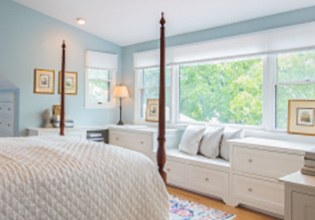Different Home Styles & Their Architectural Details: Pt 2
In the first part of this blog series, I discussed some of the most common Washington, DC area architectural styles and their distinguishing features.
In addition to the styles discussed in part one, other common home styles include:
Italianate Style Details
Italianate style architecture includes elements such as:
- Transoms
- Parapets
- Flat window hoods
- Panel moulding
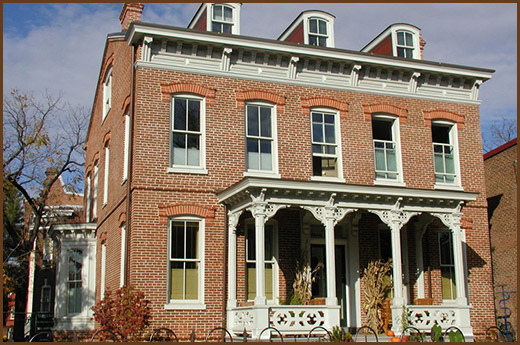
Italianate homes were predominant between 1840 and 1885. Learn more about the Italianate style.
Queen Anne Style Details
Queen Anne style architecture includes elements such as:
- Gable roof
- Dentils
- Columns
- Tower
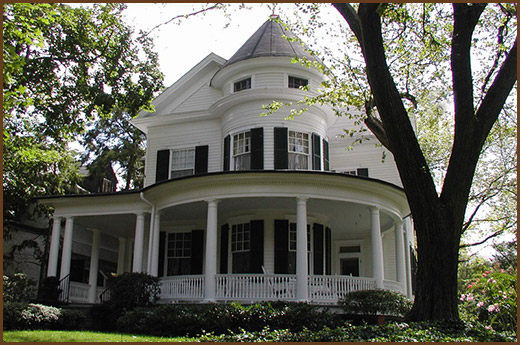
Queen Anne homes were predominant between 1880 and 1920. Learn more about the Queen Anne style.
Richardsonian Romanesque Style Details
Richardsonian Romanesque style architecture includes elements such as:
- Rounded tower
- Rough-faced, squared stonework
- Round-top arched over windows, porch supports, or entrance
- Asymmetric façade
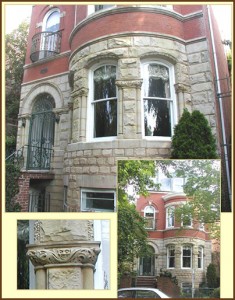
Richardsonian Romanesque homes were predominant between 1880 and 1900. Learn more about the Richardsonian Romanesque style.
Second Empire Style Details
Second Empire style architecture includes elements such as:
- Mansard roof
- Iron cresting
- Decorative brackets
- Window hoods
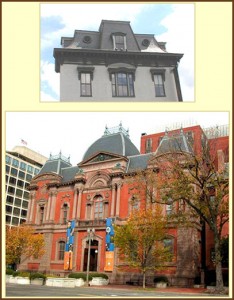
Second Empire homes were predominant between 1855 and 1885. Learn more about the Second Empire style.
Shingle Style Details
Shingle style architecture includes elements such as:
- Extensive porch
- Textured shingles
- Stone foundation
- Asymmetric façade
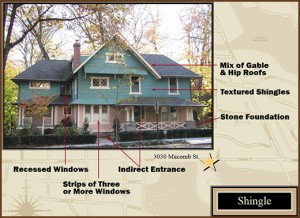
Shingle homes were predominant between 1880 and 1900. Learn more about the shingle style.
Stick Style Details
Stick style architecture includes elements such as:
- Horizontal and vertical bands
- Overhanging eaves
- Decorative trusses in gables
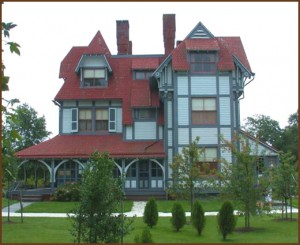
Stick homes were predominant between 1860 and 1890. Learn more about the stick style.
Tudor Style Details
Tudor style architecture includes elements such as:
- Stucco, stone, or brick siding
- Gable roof and front gables
- Half timbering
- Casement or double-hung windows
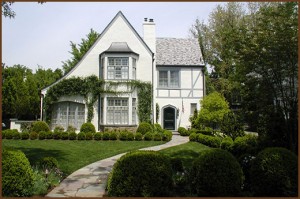
Tudor homes were predominant between 1890 and 1940. Learn more about the Tudor style.
Additional Resources
To learn more about the different architectural styles, you can read:
- Preservation Café: A Trip Through Historic Capitol Hill
- Preservation Café: A Trip Through Historic Cleveland Park
- Ask the Architect
If you want to remodel your home in Maryland, Washington, DC, or Northern Virginia, contact the Wentworth team today!
About Bruce Wentworth
Wentworth was founded by Bruce Wentworth, AIA, a noted
remodeling architect who has worked in the Washington, DC, metropolitan
area for over twenty years. He has built hundreds of his own designs,
ranging from modest bungalows to large-scale luxury residences.
Read the rest of Bruce’s bio.





